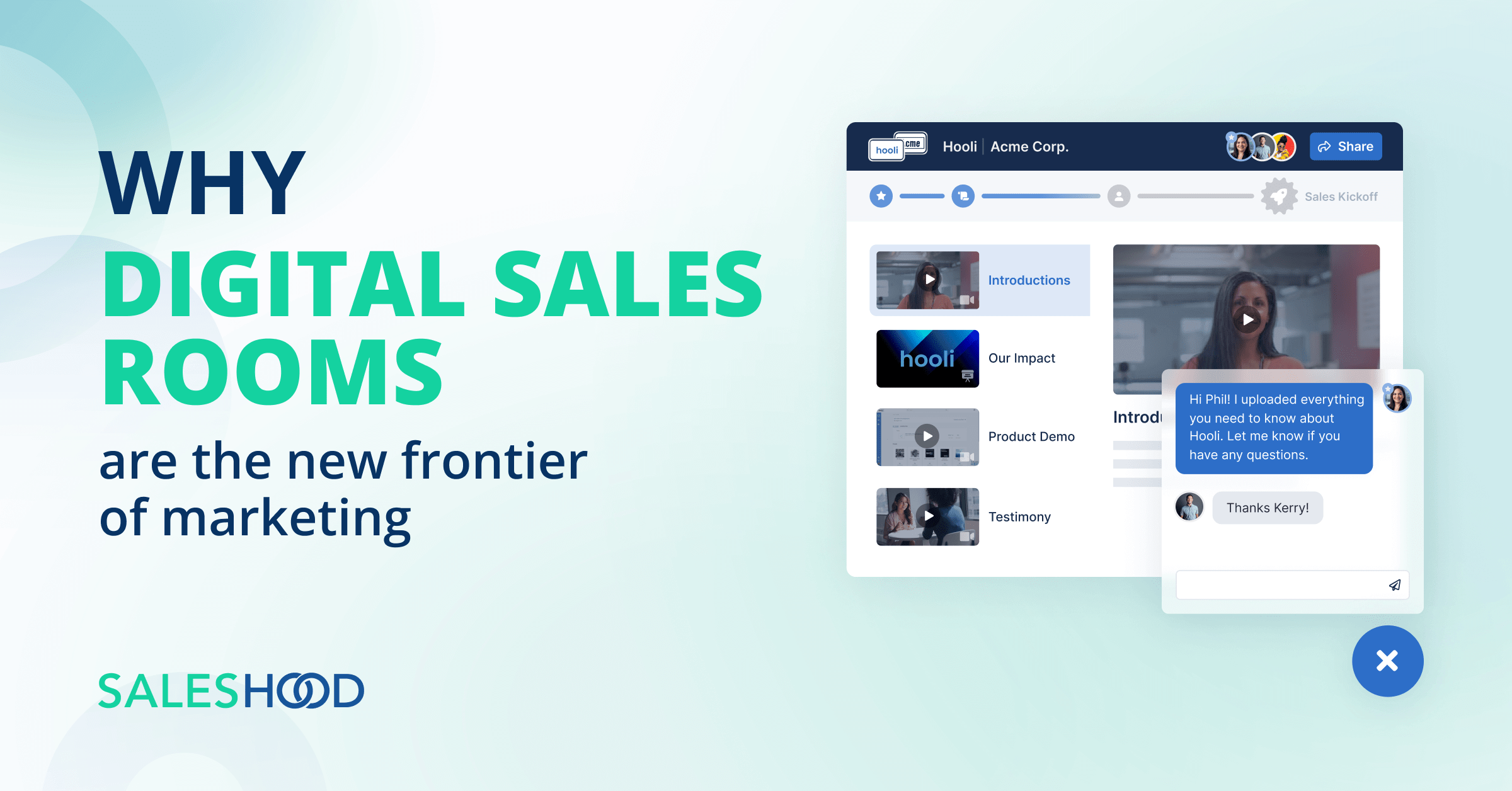In today’s world, B2B buyers increasingly prefer an omnichannel sales experience. As McKinsey’s latest research indicates, that means customers expect to engage across ten or more channels with an increasing preference for self-service interactions. Knowing that, are your sellers using the best tactics to connect with prospects in an efficient and effective way? What can you do to help them improve their outreach and stand out from the competition? Understanding that many principles of sales are tried and true while others are evolving is critical. As technology continues to evolve, so do the ways we connect with potential buyers. You have to stay ahead of the curve and adapt to the ever-changing landscape of sales prospecting. In this blog post, we’ll explore four key ways prospecting has changed in 2023 and how you can incorporate these new strategies to ensure your sales team connects with the right prospects and reaches their sales goals.
4 ways sales prospecting has changed in 2023
In this fast-paced environment, you may know you need to adjust prospecting strategies but you may not know what that looks like in practice. Sales leaders must take swift action early, both to be a part of the transformation and to reap the rewards of it. The four major shifts that have an impact on the way you should update your sales prospecting strategy are:
- How sellers research prospects
- How sellers connect with prospects
- How sellers engage prospects
- How sellers build relationships and trust
Next, let’s take a closer look at each of these components and the changes they’re inspiring:
Sales Prospecting Strategy #1: How your sellers research
In the past, sellers relied on manual searches, traditional research methods like directories, and often their own intuition. Now, your sales team can embrace modern tools like Crystal (formally Crystal Knows) to save time and effort while increasing the quality of conversations with prospects. Now that we are in a data-driven era, the importance of effective research has skyrocketed. If sellers are using older methods to gather information about prospects, it may not be in-depth or up-to-date. Instead, encourage a focus on understanding your target audience and researching the target accounts not just as prospects, but as people. That will help sellers find a better way to engage, and improve sales efficiency. In addition to using advanced tools, develop a system for organizing research. This will make it possible to access and analyze valuable information. Then, you can put a process in place to ensure your team remains focused, efficient, and effective in their prospecting efforts. That process may look something like this:
- Consolidate a list of Ideal Customer Profile (ICP) accounts
- Create categories of leads and lead generation sources
- Assign those to different sales team members
To optimize your research further, you may consider implementing an account-based marketing (ABM) approach, which focuses on strategically targeting high-value accounts instead of casting a wide net. This may help your team prioritize their efforts, leading to more significant results and a better return on investment.
Sales Prospecting Strategy #2: How your sellers connect with prospects
Relying on a high volume of email and call cadences to contact potential leads won’t work moving forward. Now, there’s a shift toward modern sales prospecting methods that are smarter, faster, and more effective with a focus on quality over quantity. Top sellers spend an average of 6 hours every week researching their prospects, and even more time is spent figuring out how to connect with them. One of the biggest changes is that personalization is crucial in any communication activity, which requires a deep understanding of your target audience. It’s also important to look at all the different aspects sellers can personalize. For example, emails with personalized subject lines get a 26% boost in open rates. If your company is using modern solutions as you reach out to potential buyers, remember the importance of effective prompt writing, asking better questions, and getting the right data. Using tools like Lane Assist, ChatGPT, and Grammarly can improve the quality of outreach and messages. Focusing on quality over quantity, modifying prompts, summarizing content with key messages, and personalizing communication is critical. Additionally, executives should be involved in generating at least one or two leads per month. By involving executives in the prospecting process, you’ll demonstrate a unified and committed approach to potential buyers.
Sales Prospecting Strategy #3: How your sellers engage buyers
Spamming customers with irrelevant messages and pushing hard sales tactics will cause efforts to get lost in the noise. Now your team can create content and engage through timely interactions with your prospects. There are many methods to do this, but the most important thing is showing up the right way. When it comes to engaging with potential customers, this has evolved into providing value and taking an interest in their needs and goals. Focus on engaging in relevant conversations and contributing insights. Be authentic, contextual, and provide good information to build trust and interest over time. This approach will set your organization apart from the competition and lead to long-term relationships. You may consider having sellers leverage social media platforms and engage with potential buyers through direct messaging, commenting on their posts, or sharing valuable content. These tactics build rapport with prospects and show genuine interest in a prospect’s needs, making them more receptive to your message. What content is valuable to your prospects? Share resources, articles, or relevant industry news. This will show expertise and commitment to staying informed about their challenges and the market. Remember to have sellers regularly participate in LinkedIn comments, join industry-specific groups, and attend virtual events to stay ahead of the curve and remain knowledgeable in the field. Another way to boost engagement throughout the sales process is by using digital sales rooms. Digital sales rooms provide a dedicated space for sellers and buyers to collaborate, making it easier to share personalized content, including videos, case studies, proposals, and more. Collaborating this way gives sellers insight into who on the buying committee is accessing the content, empowering sellers with data and insight that helps accelerate the sales cycle.
Sales Prospecting Strategy #4: How your sellers build relationships and trust
Placing all the attention on generating SQLs and neglecting the importance of trust-building is a mistake you can’t afford to make. People buy from companies and reps they know, like, and trust. Establish trust with potential customers by connecting with them on a regular basis. This is what can lead to long-term relationships and increased sales. Once a week, encourage sellers through your feed and see who they can connect with. You may use ideas like:
- Congratulating network connections on job promotions
- Asking your network about what’s happening in their business right now
- Sending relevant information that relates to industry updates or issues
Also, remember that the role of an SDR is not to be the sole provider of SQLs, but to coordinate lead generation with executives, existing customers, and board members. Facilitate an environment and encourage habits that demystify the process of connecting with prospects. Try breaking down lead generation goals into small numbers with associated metrics and sources, allowing your team to focus on specific targets and milestones. This targeted approach will ensure you’re dedicating time and resources effectively, ultimately leading to more successful relationships and increased trust with potential buyers. When there’s a sales conversation, encourage your sales team to practice active listening. By genuinely understanding their needs and concerns, you can provide customized solutions and demonstrate your commitment to their success. This level of personalization will foster trust and set the foundation for long-lasting business relationships.
The key to keeping your sales prospecting strategy current
As we consider the changes in sales prospecting, it’s important to stay ahead of the curve by adapting to new research methods, outreach strategies, engagement approaches, and trust-building techniques. By honing in on quality, personalizing communication, and providing value, you’ll forge stronger connections with potential customers and increase your chances of success. That said, remember your prospecting strategy isn’t something that you can set and forget. Keep learning and experimenting with different strategies, and stay up-to-date on industry trends and best practices. It’s also a good idea to regularly evaluate your sales prospecting tools, techniques, and results to identify areas for improvement and ensure you’re using the most effective strategies. By keeping an eye on all of these things, your business can thrive in an increasingly competitive market.
Resources to transform your organization’s prospecting strategy:
If you want to get resources to enable your entire GTM team to succeed, the Winning by Design Revenue Academy in SalesHood has exactly what you need. This resource offers an interactive hands-on training approach, best-in-class frameworks, and blueprints. All to increase performance and unify your team around a common language – quickly and efficiently. Ready to take the next step and learn how to enable your teams with modern sales training, sales coaching, and sales content? Book a time to talk to one of our experts. SalesHood powers fast-growing companies with our purpose-built, all-in-one sales enablement platform by activating revenue teams to improve sales effectiveness and efficiency. Get additional sales insights by making one of these posts your next read: Sales Enablement Software: 9 Implementation Mistakes to Avoid Creating a High-Impact Sales Enablement Program Sales Methodology Guide: Choosing the Right One for Your Business



